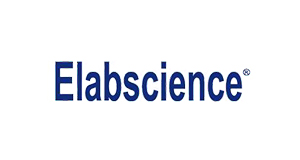Recombinant Human K-Ras protein (His tag)
Recombinant Human K-Ras protein (His tag)
Artikelnummer
ELSPDEH100370-100
Verpackungseinheit
100 µg
Hersteller
Elabscience Biotechnology
Verfügbarkeit:
wird geladen...
Preis wird geladen...
Abbreviation: K-Ras
Target Synonym: RASK;K-Ras 2;K-Ras4B
Target Species: Human
Expression Host: E.coli
Fusion Tag: N-His & C-His
UNIProt ID: P01116
Background: K-Ras belongs to the small GTPase superfamily, Ras family. As other members of the Ras family, K-Ras is a GTPase and is an early player in many signal transduction pathways. It is usually tethered to cell membranes because of the presence of an isoprenyl group on its C-terminus. K-Ras functions as a molecular on/off switch. Once it is turned on it recruits and activates proteins necessary for the propagation of growth factor and other receptors' signal, such as c-Raf and PI 3-kinase. It binds to GTP in the active state and possesses an intrinsic enzymatic activity which cleaves the terminal phosphate of the nucleotide converting it to GDP. Upon conversion of GTP to GDP, K-Ras is turned off. The rate of conversion is usually slow but can be sped up dramatically by an accessory protein of the GTPase activating protein class, for example RasGAP. In turn K-Ras can bind to proteins of the Guanine Nucleotide Exchange Factor class, for example SOS1, which forces the release of bound nucleotide. Subsequently, K-Ras binds GTP present in the cytosol and the GEF is released from ras-GTP. Besides essential function in normal tissue signaling, the mutation of a K-Ras gene is an essential step in the development of many cancers. Several germline K-Ras mutations have been found to be associated with Noonan syndrome[4] and cardio-facio-cutaneous syndrome. Somatic K-Ras mutations are found at high rates in Leukemias, colon cancer, pancreatic cancer and lung cancer.
Sequence: Met 1-Met 186
Purity: > 95 % as determined by reducing SDS-PAGE.
Formulation: Lyophilized from sterile PBS, pH 7.4.
Normally 5 % - 8 % trehalose, mannitol and 0.01% Tween80 are added as protectants before lyophilization.
Please refer to the specific buffer information in the printed manual.
Endotoxin: Please contact us for more information.
Target Synonym: RASK;K-Ras 2;K-Ras4B
Target Species: Human
Expression Host: E.coli
Fusion Tag: N-His & C-His
UNIProt ID: P01116
Background: K-Ras belongs to the small GTPase superfamily, Ras family. As other members of the Ras family, K-Ras is a GTPase and is an early player in many signal transduction pathways. It is usually tethered to cell membranes because of the presence of an isoprenyl group on its C-terminus. K-Ras functions as a molecular on/off switch. Once it is turned on it recruits and activates proteins necessary for the propagation of growth factor and other receptors' signal, such as c-Raf and PI 3-kinase. It binds to GTP in the active state and possesses an intrinsic enzymatic activity which cleaves the terminal phosphate of the nucleotide converting it to GDP. Upon conversion of GTP to GDP, K-Ras is turned off. The rate of conversion is usually slow but can be sped up dramatically by an accessory protein of the GTPase activating protein class, for example RasGAP. In turn K-Ras can bind to proteins of the Guanine Nucleotide Exchange Factor class, for example SOS1, which forces the release of bound nucleotide. Subsequently, K-Ras binds GTP present in the cytosol and the GEF is released from ras-GTP. Besides essential function in normal tissue signaling, the mutation of a K-Ras gene is an essential step in the development of many cancers. Several germline K-Ras mutations have been found to be associated with Noonan syndrome[4] and cardio-facio-cutaneous syndrome. Somatic K-Ras mutations are found at high rates in Leukemias, colon cancer, pancreatic cancer and lung cancer.
Sequence: Met 1-Met 186
Purity: > 95 % as determined by reducing SDS-PAGE.
Formulation: Lyophilized from sterile PBS, pH 7.4.
Normally 5 % - 8 % trehalose, mannitol and 0.01% Tween80 are added as protectants before lyophilization.
Please refer to the specific buffer information in the printed manual.
Endotoxin: Please contact us for more information.

 English
English










